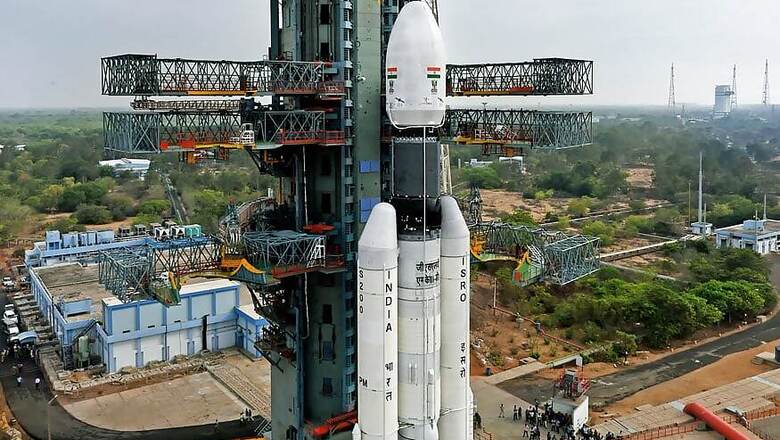
views
New Delhi: India will on Monday launch communication satellite GSAT-19 using its heaviest rocket, the Geosynchronous Satellite Launch Vehicle Mark-III (GSLV Mk-III), that weighs equivalent to five fully-loaded Boeing Jumbo Jets or as much as 200 fully grown elephants.
The GSLV MkIII-D1 rocket is scheduled for lift off at 5.28 pm from the second launch pad of the Satish Dhawan Space Centre at Sriharikota, around 120 km from Chennai. "The 25-and-half hour countdown for the launch of GSLV-Mk III-D1, carrying the 3,136 kg GSAT-19 satellite, commenced at 3.58 pm, soon after the Mission Readiness Review Committee and Launch Authorisation Board gave the clearance," ISRO said.
On the significance of the launch for ISRO, Chairman AS Kiran Kumar said, "It is an important event as we are putting our communication satellite from our own soil".
Former ISRO chairman K Kasturirangan, the man who conceived the GSLV Mk-III, confirmed it will be India's vehicle to ferry Indians into space.
The GSLV Mark-III is intended to launch satellites into geostationary orbit and as a launcher for an Indian crew vehicle. It features an Indian cryogenic third stage and a higher payload capacity than the current GSLV.
Till now, ISRO had to depend on foreign launchers for communication satellites weighing more than 2,300 kg. The GSLV MkIII-D1 is capable of lifting payloads of up to 4,000 kg into the Geosynchronous Transfer Orbit (GTO) and 10,000 kg into the Low Earth Orbit.
On this maiden mission, the GSAT-19 satellite this monster rocket will ferry is in a technological class that has no parallels in the country.
At over three tons, the GSAT-19 satellite will the heaviest satellite made and to be launched from India and is a voluminous animal. The satellite is indeed a test bed for many new technologies.
Tapan Misra, director of the Space Applications Centre, Ahmedabad, where the GSAT-19 satellite has been designed, calls it "a game changer communications satellite for India".
According to ISRO, the GSAT-19 "carries a Geostationary Radiation Spectrometer (GRASP) payload to monitor and study the nature of charged particles and the influence of space radiation on satellites and their electronic components".
ISRO says GSAT-19 also features certain advanced spacecraft technologies including "miniaturised heat pipe, fibre optic gyro, Micro-Electro-Mechanical Systems (MEMS) accelerometer". These are all important developments being tested so that they become mainstay systems on future missions.
The most innovative development on GSAT-19 is that for the first time there will be no transponders on the satellite.
In fact, the word 'transponder' will not be associated with this new bird in the sky, says Misra. Instead for the first time, ISRO is using a whole new way beaming data down using multiple frequency beams and hence it is dubbed "a high through put satellite".
Earlier, the ISRO had launched the 3,404 kg GSAT-18 communication satellite from Ariane, French Guiana. In 2014, the space agency successfully undertook the first experimental flight of the GSLV MkIII from Sriharikota.
The vehicle in a two stage flight (with a non-functional cryogenic upper stage) carried the Crew Module Atmospheric Re-Entry Experiment to the intended height of 126 km and re- entered the atmosphere safely.
The GSLV-Mk III-D1 is a three-stage vehicle with indigenous cryogenic upper stage engine designed to carry heavier communication satellites into the GTO.
Apart from the cryogenic engine, designated C25, carrying about 28 tonnes of propellants, it has two solid strap-on motors (S200) and a core liquid booster (L110).
The mission would also augment India's communication resources as a single GSAT-19 satellite will be equivalent to having a constellation of six to seven of the older variety of communication satellites in space.
At present, out of a constellation of 41 in-orbit Indian satellites, 13 are communication satellites, and the total mission life of the GSAT-19 is 10 years. (With PTI inputs)




















Comments
0 comment